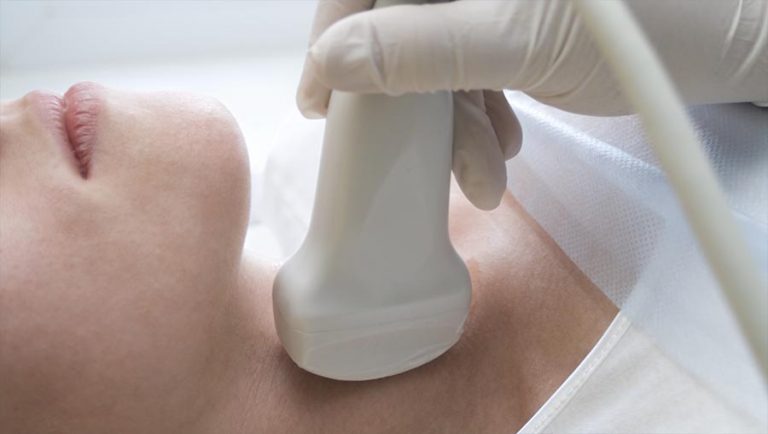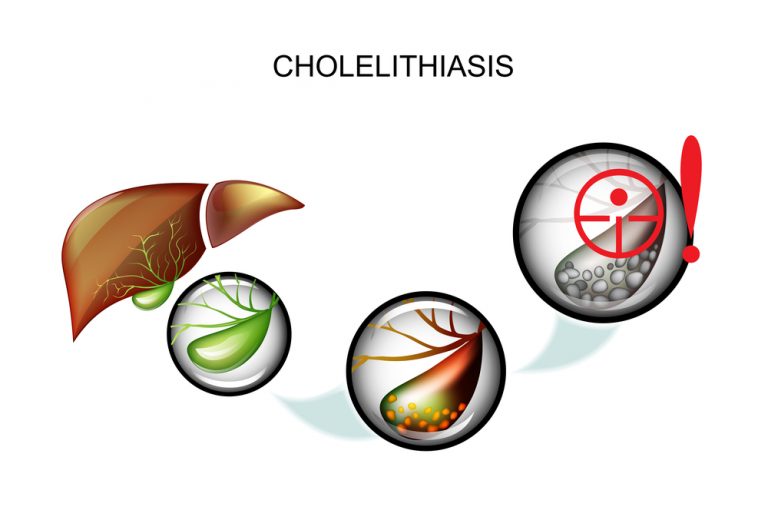Ultrasound imaging has become an indispensable tool in modern medicine. This non-invasive, radiation-free technique provides real-time images of the body's internal structures, aiding in the diagnosis and monitoring of various medical conditions. As a radiologist with years of experience in ultrasound imaging, I've witnessed firsthand the remarkable capabilities of this technology. However, like any medical procedure, ultrasound is not infallible. Misdiagnosis can occur, potentially leading to serious consequences for patients.
This article aims to shed light on the issue of ultrasound misdiagnosis, exploring its causes, consequences, and most importantly, strategies to prevent it. By understanding these aspects, both medical professionals and patients can work together to ensure more accurate diagnoses and better health outcomes.
Common Types of Ultrasound Misdiagnosis
Ultrasound misdiagnosis can take several forms, each with its own set of challenges and potential impacts on patient care:
Missed Diagnoses
A missed diagnosis occurs when an ultrasound fails to detect an existing condition. This can happen due to various factors, including technical limitations of the equipment, operator inexperience, or the nature of the condition itself.
For example, a study published in the Journal of Ultrasound in Medicine found that early-stage ovarian cancer can be challenging to detect on ultrasound, with a significant percentage of cases being missed during routine screenings. This highlights the need for vigilance and the use of complementary diagnostic methods in high-risk cases.
False Positive Results
False positives are instances where an ultrasound suggests the presence of a condition that doesn't actually exist. This type of misdiagnosis can lead to unnecessary anxiety, additional testing, and even invasive procedures.
Research from the American Journal of Roentgenology has shown that false positives in breast ultrasound are not uncommon, especially in dense breast tissue. This underscores the importance of combining ultrasound with other imaging modalities, such as mammography, for more accurate breast cancer screening.
Incorrect Measurements or Interpretations
Accurate measurements and correct interpretation of ultrasound images are crucial for proper diagnosis. Errors in these areas can lead to misdiagnosis or improper treatment plans.
A notable example is fetal biometry in obstetric ultrasounds. A study in the journal Ultrasound in Obstetrics & Gynecology revealed that even small errors in fetal measurements could significantly impact gestational age estimation and fetal growth assessment, potentially affecting pregnancy management decisions.
Factors Contributing to Ultrasound Misdiagnosis
Several factors can contribute to ultrasound misdiagnosis. Understanding these can help healthcare providers take steps to mitigate risks:
Operator Inexperience
The quality of an ultrasound examination heavily depends on the skill and experience of the sonographer or radiologist performing it. Inexperienced operators may miss subtle abnormalities or misinterpret normal variations as pathological findings.
A study in the Journal of Diagnostic Medical Sonography emphasized the importance of ongoing training and education for sonographers to maintain and improve their skills, reducing the risk of operator-related errors.
Equipment Limitations
While ultrasound technology has advanced significantly, it still has inherent limitations. Factors such as image resolution, penetration depth, and artifacts can affect the accuracy of diagnoses.
Research published in the European Journal of Radiology has shown that high-end ultrasound machines with advanced features like elastography and contrast-enhanced imaging can improve diagnostic accuracy in certain conditions, such as liver fibrosis assessment.
Patient-Related Factors
Patient characteristics can significantly impact the quality of ultrasound images and, consequently, the accuracy of diagnosis. Factors such as obesity, excessive gas in the digestive tract, or inability to maintain a required position can make it challenging to obtain clear images.
A study in the Journal of Ultrasound in Medicine demonstrated that increased body mass index (BMI) negatively affects image quality in abdominal ultrasounds, potentially leading to missed diagnoses or misinterpretations.
Interpretation Errors
Even with high-quality images, errors can occur during the interpretation phase. This can be due to cognitive biases, fatigue, or lack of clinical context.
Research in the American Journal of Roentgenology has highlighted the benefits of double-reading ultrasound images, especially in complex cases, to reduce interpretation errors and improve diagnostic accuracy.
Consequences of Ultrasound Misdiagnosis
Ultrasound misdiagnosis can have far-reaching consequences for patients, healthcare providers, and the healthcare system as a whole:
Delayed Treatment
When a condition is missed or misdiagnosed, appropriate treatment may be delayed. This can allow the condition to progress, potentially leading to more severe health outcomes.
For instance, a study in the Journal of Clinical Ultrasound found that delayed diagnosis of testicular torsion due to misinterpretation of ultrasound findings can lead to testicular loss if not corrected within a critical time window.
Unnecessary Interventions
False positive results or overdiagnosis can lead to unnecessary medical interventions, including invasive procedures, medications, or surgeries. These not only burden the patient with unneeded stress and potential complications but also strain healthcare resources.
Research published in the British Medical Journal has shown that overdiagnosis of thyroid nodules through ultrasound can lead to unnecessary fine-needle aspiration biopsies and even thyroidectomies for benign conditions.
Emotional and Psychological Impact
Misdiagnosis can have significant emotional and psychological effects on patients. A false positive diagnosis can cause undue anxiety and stress, while a missed diagnosis can lead to a loss of trust in healthcare providers and the medical system.
A study in the journal Patient Education and Counseling highlighted the long-lasting psychological impact of false-positive breast cancer diagnoses, emphasizing the need for clear communication and support for patients throughout the diagnostic process.
Strategies to Minimize Ultrasound Misdiagnosis
Reducing the incidence of ultrasound misdiagnosis requires a multi-faceted approach involving healthcare providers, technology, and patients:
Ongoing Training and Education for Sonographers
Continuous professional development is crucial for maintaining and improving the skills of sonographers and radiologists. This includes staying updated on new technologies, techniques, and best practices in ultrasound imaging.
The Society of Diagnostic Medical Sonography emphasizes the importance of continuing education and offers various resources and programs to help sonographers enhance their skills and knowledge.
Quality Assurance Programs
Implementing robust quality assurance programs can help identify and address potential sources of error in ultrasound diagnosis. This may include regular equipment calibration, image quality audits, and performance reviews.
A study in the Journal of the American College of Radiology demonstrated that implementing a structured quality assurance program in an ultrasound department led to significant improvements in diagnostic accuracy and report quality.
Double-Reading of Images
Having a second expert review ultrasound images, especially in complex cases, can significantly reduce the risk of misinterpretation. This practice has been shown to improve diagnostic accuracy across various medical specialties.
Research published in the European Journal of Radiology found that double-reading of breast ultrasounds increased cancer detection rates and reduced false-positive findings, particularly in high-risk patients.
Integration of Artificial Intelligence in Image Interpretation
Artificial intelligence (AI) and machine learning algorithms are increasingly being used to assist in ultrasound image interpretation. While not a replacement for human expertise, these tools can help flag potential abnormalities and provide a second opinion.
A study in the journal Nature Medicine demonstrated that an AI system could accurately detect and diagnose breast cancer in ultrasound images, performing on par with expert radiologists.
The Role of Patients in Preventing Misdiagnosis
Patients play a crucial role in ensuring accurate ultrasound diagnoses. Here are some ways patients can contribute:
Providing Accurate Medical History
A complete and accurate medical history helps sonographers and radiologists interpret ultrasound findings in the proper context. Patients should inform healthcare providers about all relevant medical conditions, medications, and recent procedures.
Following Pre-Examination Instructions
Many ultrasound examinations require specific preparation, such as fasting or having a full bladder. Following these instructions carefully can significantly improve image quality and diagnostic accuracy.
Asking Questions and Seeking Second Opinions
Patients should feel empowered to ask questions about their ultrasound results and seek second opinions if they have concerns. Open communication between patients and healthcare providers is key to reducing misdiagnosis.
Advancements in Ultrasound Technology Improving Accuracy
Technological advancements continue to enhance the capabilities and accuracy of ultrasound imaging:
High-Frequency Transducers
High-frequency ultrasound transducers provide improved image resolution, allowing for better visualization of superficial structures and small lesions.
A study in the Journal of Ultrasound in Medicine showed that high-frequency ultrasound significantly improved the detection and characterization of small thyroid nodules compared to conventional ultrasound.
3D and 4D Imaging
Three-dimensional and four-dimensional (real-time 3D) ultrasound imaging provide more detailed views of anatomical structures, improving diagnostic accuracy in areas such as obstetrics and cardiology.
Research published in Ultrasound in Obstetrics & Gynecology demonstrated that 3D ultrasound improved the detection and assessment of fetal facial anomalies compared to 2D ultrasound alone.
Contrast-Enhanced Ultrasound
Contrast-enhanced ultrasound uses microbubble contrast agents to improve the visualization of blood flow and tissue perfusion. This technique has shown promise in improving the characterization of liver lesions and other vascular abnormalities.
A study in the European Journal of Radiology found that contrast-enhanced ultrasound significantly improved the diagnosis of focal liver lesions compared to conventional B-mode ultrasound.
Case Studies: Learning from Past Misdiagnoses
Examining past cases of ultrasound misdiagnosis can provide valuable insights and learning opportunities for healthcare providers:
Case 1: Missed Ectopic Pregnancy
A 28-year-old woman presented to the emergency department with lower abdominal pain. An initial transvaginal ultrasound was interpreted as showing a normal intrauterine pregnancy. However, the patient's symptoms worsened, and a repeat ultrasound 24 hours later revealed an ectopic pregnancy in the fallopian tube.
This case highlights the importance of correlating ultrasound findings with clinical symptoms and the need for follow-up imaging in uncertain cases. The Society for Maternal-Fetal Medicine recommends close follow-up for pregnancies of unknown location to prevent delayed diagnosis of ectopic pregnancies.
Case 2: Overdiagnosis of Thyroid Nodules
A 45-year-old man underwent a routine health check that included a thyroid ultrasound. The ultrasound reported multiple thyroid nodules, leading to a fine-needle aspiration biopsy. The biopsy results were inconclusive, causing significant anxiety for the patient. A second opinion and repeat ultrasound revealed that the initial exam had overestimated the number and size of the nodules, with most being normal thyroid tissue variants.
This case underscores the importance of adhering to established guidelines for thyroid nodule management, such as those published by the American Thyroid Association, to avoid unnecessary procedures and patient anxiety.
International Ultrasound Services' Approach to Ensuring Accuracy
At International Ultrasound Services in Notting Hill, London, we are committed to providing accurate and reliable ultrasound diagnoses. Our approach includes:
Quality Control Measures
We have implemented a comprehensive quality assurance program that includes regular equipment maintenance, image quality audits, and peer review of challenging cases.
Expertise of Our Radiologists and Sonographers
Our team consists of highly trained and experienced radiologists and sonographers who undergo regular professional development to stay at the forefront of ultrasound technology and techniques.
State-of-the-Art Equipment
We invest in the latest ultrasound technology to ensure the highest image quality and diagnostic accuracy. Our equipment includes high-frequency transducers, 3D/4D imaging capabilities, and contrast-enhanced ultrasound when needed.
Conclusion
Ultrasound imaging is a powerful diagnostic tool, but like any medical procedure, it is not without its challenges. By understanding the potential for misdiagnosis and implementing strategies to minimize errors, we can harness the full potential of this technology to improve patient care.
As healthcare providers, it's our responsibility to continually strive for accuracy and excellence in ultrasound diagnosis. This involves ongoing education, adherence to best practices, and embracing technological advancements. Equally important is empowering patients with knowledge and encouraging their active participation in the diagnostic process.
At International Ultrasound Services, we remain committed to providing the highest standard of care through accurate ultrasound diagnoses. By combining expert knowledge, advanced technology, and a patient-centered approach, we aim to minimize the risk of misdiagnosis and ensure the best possible outcomes for our patients.
Content Information
We review all clinical content annually to ensure accuracy. If you notice any outdated information, please contact us at info@iuslondon.co.uk.
About the Author:

Yianni is a highly experienced sonographer with over 21 years in diagnostic imaging. He holds a Postgraduate Certificate in Medical Ultrasound from London South Bank University and is registered with the Health and Care Professions Council (HCPC: RA38415). Currently working at Barts Health NHS Trust, Yianni specialises in abdominal, gynaecological, and obstetric ultrasound. He is a member of the British Medical Ultrasound Society (BMUS), Society of Radiographers (SoR) and regularly contributes to sonographer and junior radiologists training programs.



